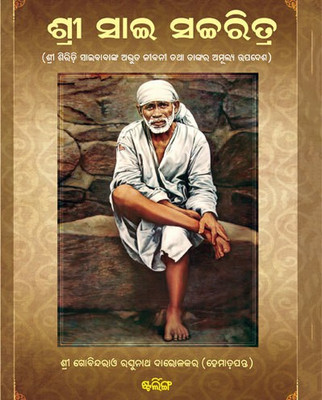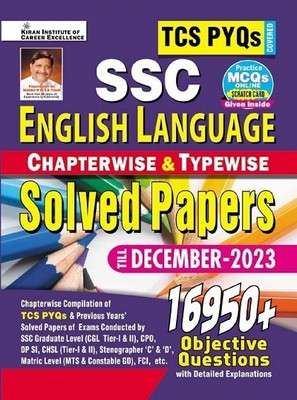
Early Harappans and Indus Sarasvati Civilization (English, Hardcover, Sharma Damodar)
Early Harappans and Indus Sarasvati Civilization (English, Hardcover, Sharma Damodar)
- Language: English
- Binding: Hardcover
- Publisher: Kaveri Books
- Genre: Social Science
- ISBN: 9788174790729, 9788174790729
- Pages: 551
- Cash on Delivery available?
According to a scholar the Harappan Civilization is the gift of two rivers-the Indus and Sarasvati whose tributaries had played a dominant and decisive role in the origin of this bronze civilization. As of now around 2668 Harappan and its associated sites have been reported, of which 1068 sites are located in the dried-up bank of the Sarasvati river. The Sarasvati was a mighty river between ca 5000 and 1800 BC around ca 1800 BC, due to neo-tectonic movements in the Himalayas, the river started drying up. It flowed down from the Himalayas to Adi Badri towards Desalpur in Gujarat. This work is a collection of forty research papers contributed by the noted scholars and historians from India and abroad. Volume-I contains nineteen papers which included introduction, the origin of Harappan and Early Harappan village chalcolithic cultures. Volume-II covers on Indus Sarasvati Civilisation and includes twenty-one papers on the Mature Indus Sarasvati Civilization which contain controversial and clashing views. Available archaeological evidences suggest the Atharvavedic and Mature Harappan were contemporary and they had contacts with each other. The Atharvavedic people were the authors of the copper hoard culture. The Atharvavedic people were the authors of the copper hoard culture. The nomenclature, either of Harappan, Indus or Indus Sarasvati civilization hardly matters as the meaning of these are the same. This has been confirmed on the basis of the available archaeological evidences. Bound in two volumes, the papers with notes, references and bibliography are well illustrated and grouped in three parts, ie, Introduction Early Harappans and Indus-Sarasvati Controversies.
Table of Contents
Part I: Introduction
Chapter 1: Harappan civilization by D P Sharma
Chapter 2: South asian archaeology: some issues by D P Agrawal
Part II: Early Harappans
Chapter 3: New discoveries point to a southern origin: gulf of cambay by David Frawley & Navratna Rajaram
Chapter 4: World's oldest lost civilization found in south asia by Raj Chengapa
Chapter 5: Early neolithic settlement in bannu, Pakistan by J R Knox, Farid Khan and K D Thomas
Chapter 6: Sheri Kahan Tarakai: Excavation in Bannu District, N W F P by J R Knox, Farid Khan and K D Thomas
Chapter 7: Origin of the Harappan civilization by D P Sharma
Chapter 8: Origin of Harappan civilization and mehrgarh excavations by Jean Francois Jarrige
Chapter 9: Earliest agriculture in the kachi plain (Mehrgarh) by Lorenzo Costantini
Chapter 10: Early harappan remains, Pottery and artifacts at nausharo by Anaick Samzun
Chapter 11: Early harappan ceramics by D P Sharma
Chapter 12: Petrographic analysis of early harappan ceramics of south asia (ca 3500-2700 BC) by Graham M Chandler
Chapter 13: Padri: the early harappan site in gujarat by Vasant Shinde
Chapter 14: Early harappans in gujarat by Abhijit Majumdar
Chapter 15: Ochre coloured ceramics and the early and mature harappans by R C Gaur
Chapter 16: 5th-4th millennium dating rigveda culture by Shivaji Singh
Chapter 17: Indo-european homeland: an indian perspective by D N Tripathi
Chapter 18: Dhalewan early-mature harappan excavated site in punjab (india) by Madhubala & Vishnu Kant
Chapter 19: Transformation of the harappan civilization by G L Possehl
Part III: Indus-Sarasvati Controversies
Chapter 20: Indus and sarasvati in history, geology and archaeology by S P Gupta,
Chapter 21: Archaeology of sarasvati by B B Lal
Chapter 22: Origins of the indus-sarasvati civilization by S P Gupta
Chapter 23: Harappans and rigveda by R S Bisht
Chapter 24: Harappanans: vedic civilization by Suman Pandya
Chapter 25: The harappans, sarasvati and rigveda by T P Verma
Chapter 26: Rigvedic and harappans connections by Shivaji Singh
Chapter 27: The mahabharat for harappan civilization by S P Gupta
Chapter 28: Sarasvati and harappan archaeology by Vedagya Arya
Chapter 29: Vedic Harapans by N S Rajaram
Chapter 30: Archaeology cannot 'prove' the vedas by Nayanjot Lahiri & Upender Singh
Chapter 31: Rational approach to the rigveda and indus civilization by Malati J Shende
Chapter 32: Indus seals and atharvaveda by P V Pathak
Chapter 33: Notes on flora and fauna in the rigveda by B B Lal
Chapter 34: Technology transfer in 4th millennium B C in bannu basin by K D Thomas, J R Knox adn Farid Khan
Chapter 35: Third millennium painted grey wares in pakistan and iran by Rita P wright,
Chapter 36: Sarasvati: river and civilization by N S Rajaram
Chapter 37: Harappan language and script by N S Rajaram
Chapter 38: Vedic harappans and the horse symbolism by N S Rajaram and N Jha
Chapter 39: Harappan Occupation at nausharo by Jean-Francois Jarrige,
Chapter 40: Collapse of the sarasvata sabhyata: an elegy in mahabharata by Arun Kumar.
| Imprint |
|
| Height |
|
| Depth |
|
| Weight |
|






